There are no problems with breasts, such as size and shape
Also, a bust that is too large is susceptible to aging and is more likely to droop.
In this hospital, we offer two treatments that not only reduce the size, but also eliminate problems related to nipples, such as reduction of the areola.
The bust is formed by skin, adipose tissue, and mammary glands. To make it smaller and lift, it is necessary to lift these three organizations in a balanced manner.There are various methods, but basically, a part of the mammary gland, skin and subcutaneous fat is taken to form a beautiful shape.
The plastic surgeon will carefully counsel the patient according to the patient’s wishes and select the most appropriate method for the ideal bust formation.
An experienced doctor will examine the degree of breast droop and the size and shape of the areolae and teat.
Carefully listen to the patient’s wishes for the finished image, we will propose a natural finish.
After confirming the operation method, anesthesia is performed and the operation is started.
After the operation, we will follow up several times to observe the beauty, health and function of the bust.
Surgery to correct a breast that has drooped due to aging or other factors into a firm upward bust. Surgery to remove excess skin / subcutaneous fat, pull it up and straighten the nipple.
If the symptom is mild to moderate, choose a method with less damage. The skin around the areola is incised on the same centrifuge, and the excess fat is excised and sutured in a purse-like shape toward the areola. Scars are not noticeable because they are only around the areola. If the symptoms are severe, leave the areola and cut the skin in a saddle shape.
Suitable for people with mild to moderate bust droop.
Cut the skin around the areola in a donut shape and sew it like a drawstring to correct the drooping.
The wound is only noticeable around the areola, not conspicuous.
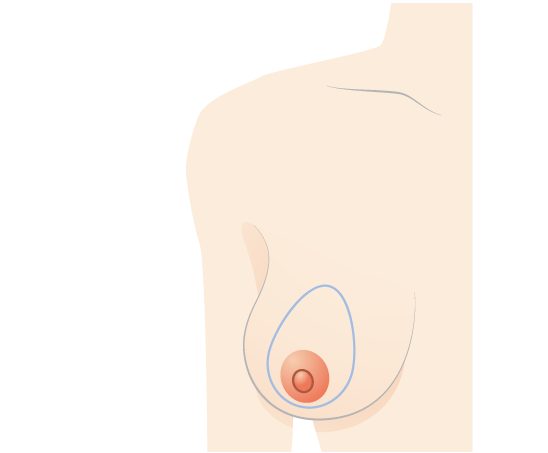
① Mark the incision area
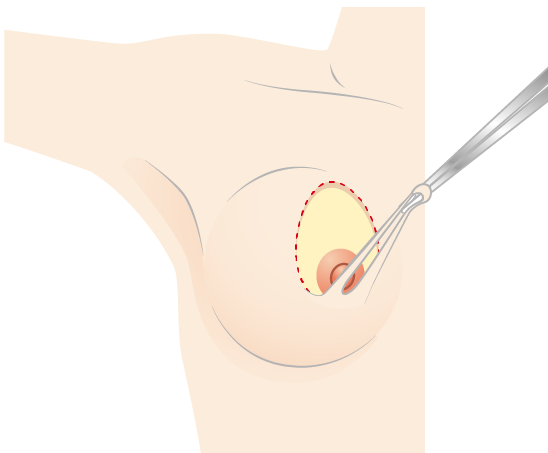
② Cut the epidermis along the marked line
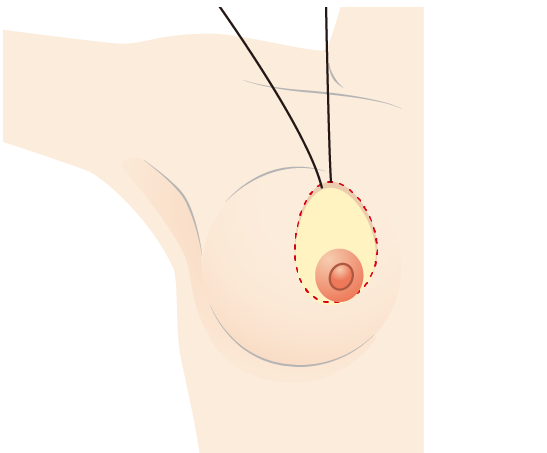
③ Collect mammary gland tissue and fat, and move it upwards while purging the outer periphery of the incision
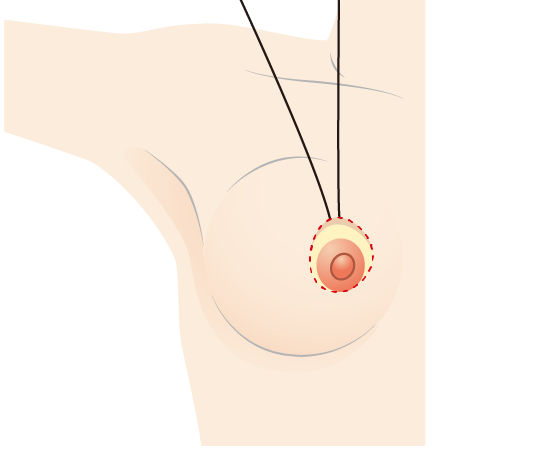
④ The outer skin is drawn around the areola by purse string stitching
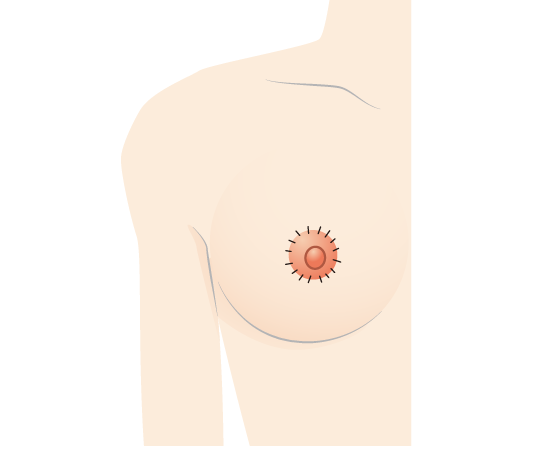
⑤ Re-sew around the areola and finish. The scars are almost inconspicuous because they are hidden around the areola.
Suitable for people with moderate to advanced bust droop. An incision is made not only around the areola but also to the bottom of the breast to remove fat. Compared with the first method, the scratches are longer.
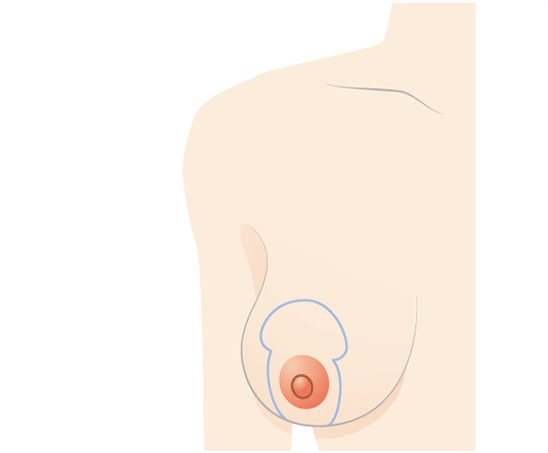
① Designing the incision line from the areola to the bottom of the breast
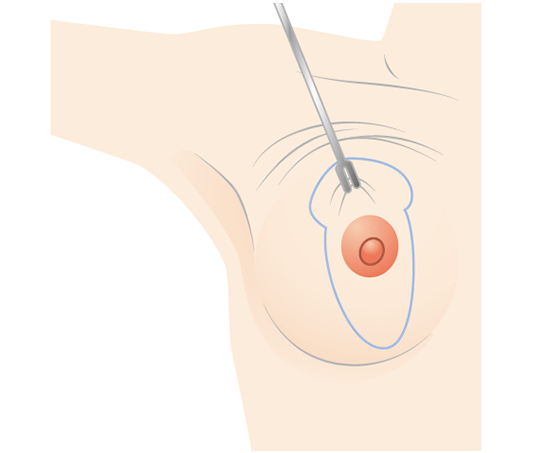
② Raise the breast to the ideal line
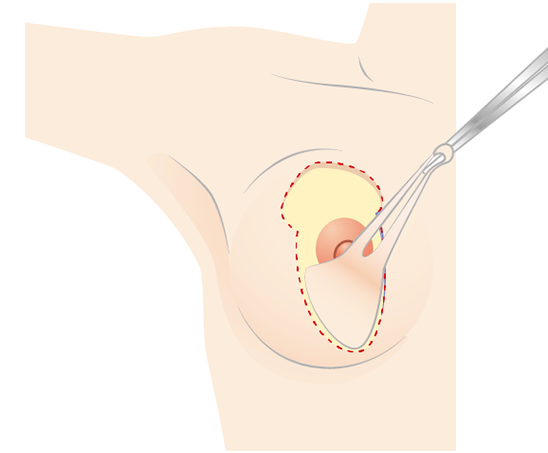
③ Cut the skin along the incision line
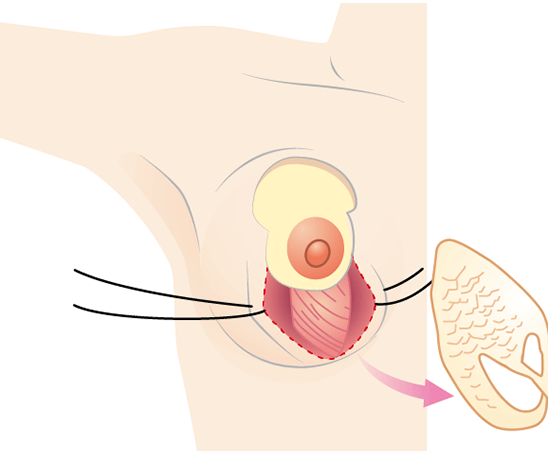
④ Partial removal of excess fat and mammary gland under the breast. The amount of resection is determined by the degree of drooping
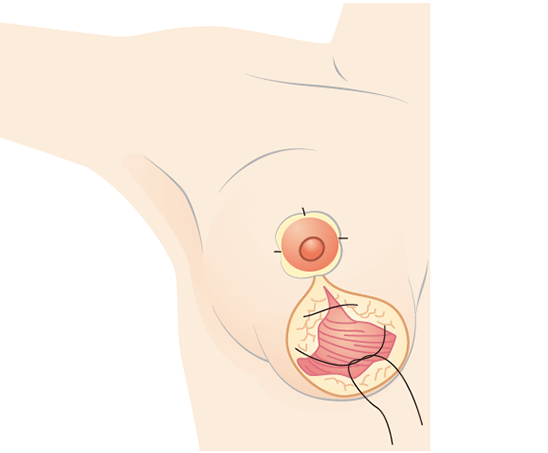
⑤ Suture the left and right fat layers
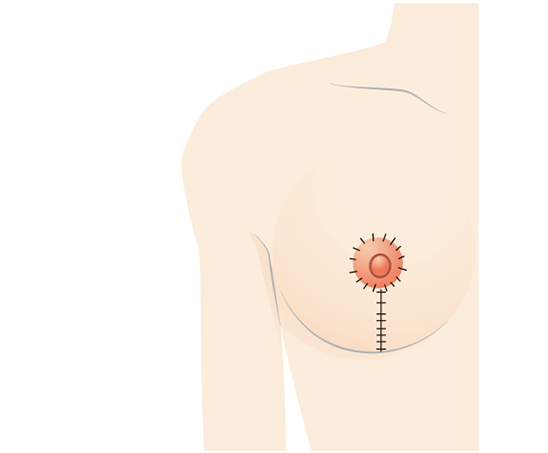
⑥ Suture the skin and finish. The scar is only around the areola.
Suitable for people with moderate to advanced bust droop. From around the areola to the bottom of the breast, cut the skin like a saddle to form a bust.
A reverse T-shaped scar remains after stitching. While the bust is raised without fail, the scars are large.
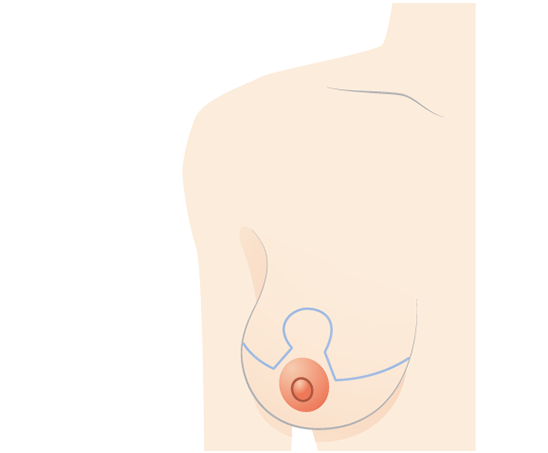
① Mark the incision area
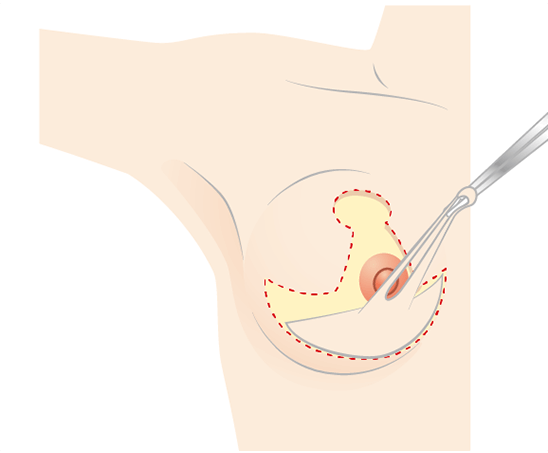
② Excise breast epidermis and excess fat according to design
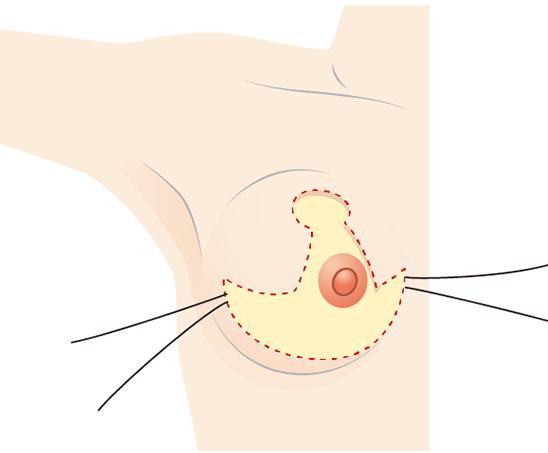
③ Excise excess fat and partial wrinkles of the mammary gland from the lower breast
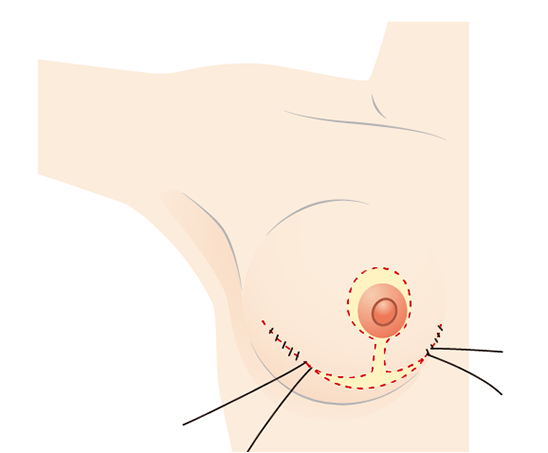
④ Suture the incision area so that it is inverted T-shaped. At that time, raise so that the areola is in the upper circular part

⑤ Suture carefully around the areola and underneath the breast.
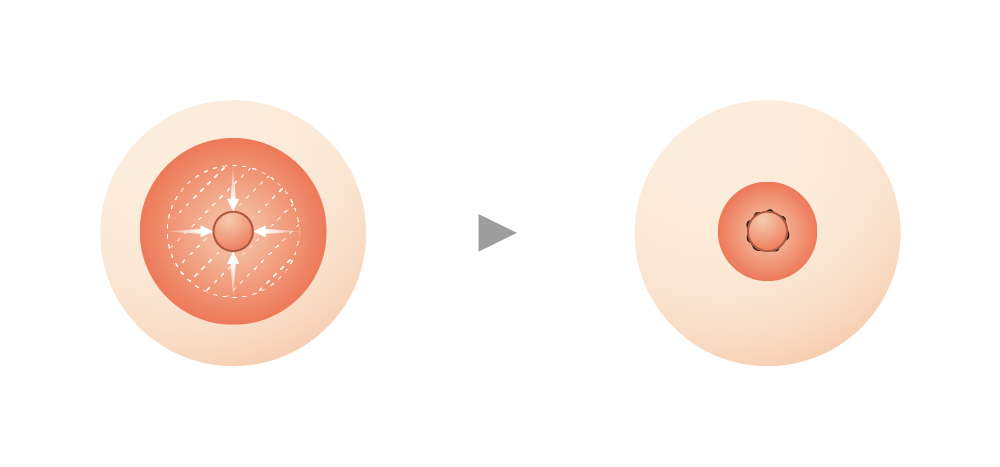
The average size of the areola is said to be 32 to 35 mm in diameter. The areola is often enlarged due to childbirth and aging, and it is not uncommon for wrinkles to appear in the areola due to the atrophy of the breast itself.
Surgery to reduce or improve the size of the areola due to congenital or various factors. There are two types of surgery: squeezing the skin from the incision around the areola and fixing the areola, and removing the skin around the areola and the breast. The operation time is as short as 1 hour.
Also, since the milk ducts are not cut, breastfeeding after surgery is safe. We will select the most appropriate method after confirming the current state of the breast.
Details of treatment for areola reduction
Surgery reduces the areola by incision at the base of the nipple, where the wound is not noticeable.
In this method, the root skin of the nipple is incised along the nipple, and the areola is cut into a donut shape along the desired size.
Then, the purse-string suture is performed with the excised skin facing the base of the nipple, and the procedure is completed.
The stitched part becomes a less visible nipple base, so it will not stand out after the wound.